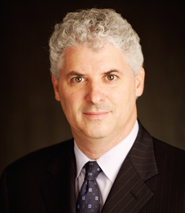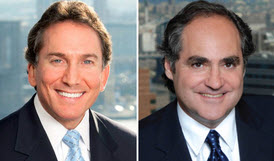 By Richard M. Steigman;
By Richard M. Steigman;
Launched in 1965, Medicaid provides joint federal and state funding of medical care for individuals who cannot afford to pay their own medical costs. Although the Federal Government pays the majority of the costs incurred for patient care, under Federal Law, the states are tasked with administering the program.
One of the states’ obligations under Medicaid law is to seek reimbursement for payments for medical expenses from responsible third parties to the extent of such legal liability (42 U.S.C. § 1396[a][25][B]). To fulfill that mandate, New York enacted Social Services Law § 104-b, which gives the State Medicaid official the right to enforce a lien “for such amount as may be fixed by the public welfare officer not exceeding, however, the total amount of such assistance and care furnished by [Medicaid] on or after the date when such injuries occurred.”
This statute, like the ones enacted in other states, was interpreted as to allow Medicaid to assert a lien on a recovery up to the amount, regardless of the amount of the recovery which is properly allocable to Medicaid (see, e.g., Baker v. Sterling, 39 N.Y.2d 397, 384 N.Y.S.2d 128 [1976]). Put another way, under the interpretation used by Medicaid and backed by the Courts, if Medicaid had expended $200,000 for a plaintiff who suffers horrific personal injuries (and whose pain and suffering and loss of earnings claims would fairly be worth millions of dollars), but ultimately must settle a case for $250,000 due either to inadequate insurance, then Medicaid, in it is discretion, could assert a lien against the recovery up to the total amount of its expenditures. This is true irrespective of the fact that, had a finder of fact allocated the settlement among the different elements of damages, the amount properly allocable to Medicaid would, in fact, amount to a small fraction of its claimed lien.
Continue reading →
 In their latest Trial Advocacy Column, New York Personal Injury Lawyers Ben Rubinowitz from Gair Gair Conason Steigman Mackauf Bloom and Rubinowitz and Evan Torgan from Torgan & Cooper write: Weaknesses in the opposition’s case are often not readily apparent in the facts contained in their own record. Nevertheless, powerful and persuasive weaknesses might well be found in what those very records do not say, but, indeed, should say.
In their latest Trial Advocacy Column, New York Personal Injury Lawyers Ben Rubinowitz from Gair Gair Conason Steigman Mackauf Bloom and Rubinowitz and Evan Torgan from Torgan & Cooper write: Weaknesses in the opposition’s case are often not readily apparent in the facts contained in their own record. Nevertheless, powerful and persuasive weaknesses might well be found in what those very records do not say, but, indeed, should say. New York Personal Injury Attorneys Blog
New York Personal Injury Attorneys Blog


 In their Trial Advocacy column, New York Personal Injury Attorneys
In their Trial Advocacy column, New York Personal Injury Attorneys  Our partner,
Our partner,  In their Trial Advocacy column, New York Personal Injury Lawyers
In their Trial Advocacy column, New York Personal Injury Lawyers  In their
In their  Our partner,
Our partner, 